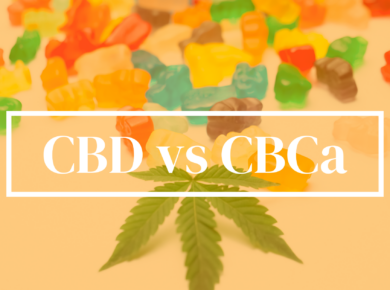Cannabinol (CBN) and Cannabigerolic Acid (CBGa) are two fundamental cannabinoids derived from the robust hemp and cannabis plants, each boasting unique properties and functionalities.
Getting Acquainted with CBN
CBN, often associated with mild psychoactive properties, emerges as THC matures and deteriorates. It’s renowned for its potential to influence sleep patterns and induce a state of relaxation. However, it’s pivotal to acknowledge that these impacts can substantially vary depending on the user and usage circumstances.
CBGa: The Precursor Cannabinoid
Conversely, CBGa, frequently hailed as the “mother of all cannabinoids,” acts as a precursor to other cannabinoids, including THC and CBD, playing a crucial role in synthesizing them within the plant.
Comparing CBN and CBGa
While both CBN and CBGa play vital roles within the hemp and cannabis plants, their functions diverge significantly. CBN, forming as THC degrades, is acknowledged for its potential sedative impacts. Conversely, CBGa orchestrates the formation of other cannabinoids, proving pivotal in their synthesis.
FAQs
- Understanding CBN and CBGa
- CBN emerges as THC ages, typically more abundant in mature cannabis. It is recognized for potentially influencing sleep and relaxation without inducing intoxication. CBGa, the “mother” of cannabinoids, serves as the precursor for others, playing a vital role in their synthesis.
- How Are CBN and CBGa Produced?
- CBN forms through THC’s oxidation, generally found in minimal quantities in most cannabis strains. Its levels can be increased by exposing harvested cannabis to air. CBGa is produced in the plant’s trichomes and is the precursor for synthesizing all other cannabinoids.
- Exploring the Potential Uses of CBN and CBGa
- CBN is often utilized in products aiming to enhance sleep and relaxation without causing intoxication. While CBGa isn’t as widely utilized, its potential uses are under rigorous investigation due to its foundational role in cannabinoid synthesis.
- Interactions with the Endocannabinoid System
- CBN and CBGa engage with the endocannabinoid system differently. CBN prefers to bind with the CB2 receptor, while CBGa interacts with both CB1 and CB2 receptors.
- Consuming CBN and CBGa Simultaneously
- Consuming CBN and CBGa together is possible and often occurs with full-spectrum cannabinoid products. Always consult product lab reports to comprehend the cannabinoid profile of the product being consumed.
Medical Disclaimer: The information presented is for educational purposes and should not substitute professional medical advice. Always consult your healthcare provider before using any CBN or CBGa products.
Where to Purchase: CBN and CBGa products can be purchased both online and in physical stores. Always ensure compliance with local laws before purchasing.
Shop




